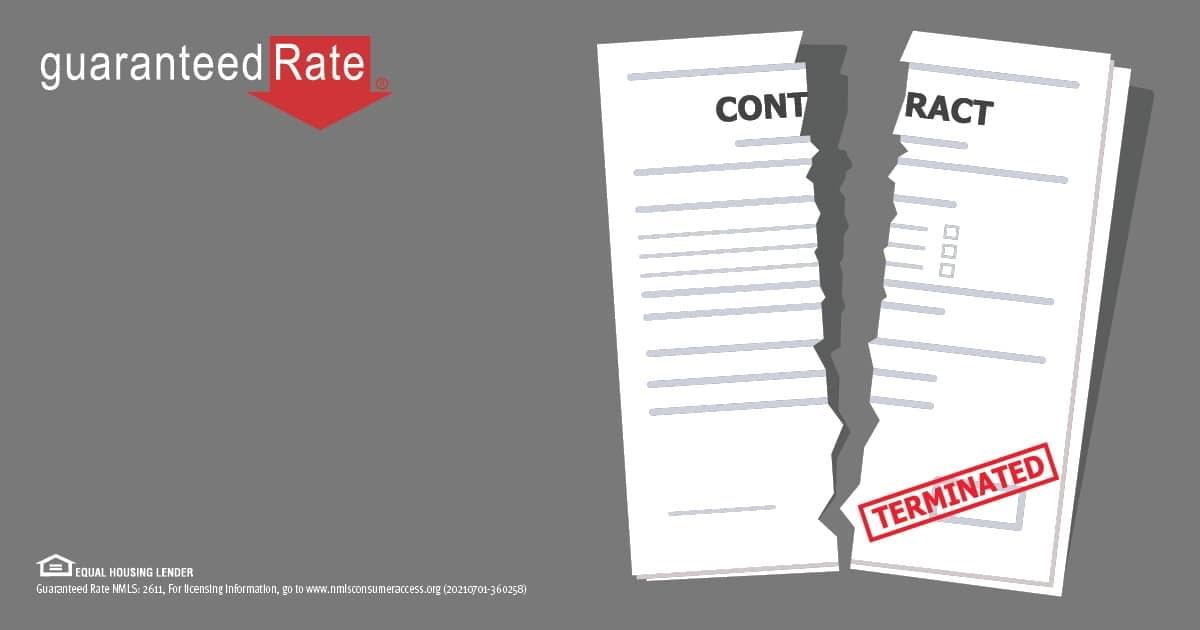What is the right of rescission?

Securing a home loan or refinancing a mortgage can be a complicated process that the average borrower just doesn’t know much about. Due to this general inexperience, some unknowing borrowers have been taken advantage of. In the past, predatory lenders have offered unfair lending agreements that some homeowners assume are industry standard. Thinking they’ve landed a fair financing deal, some homeowners sign away their greatest asset in exchange for high interest rates and unreasonable payment plans.
What is the right of rescission?
The right of rescission, also referred to as the right to cancel, was designed to allow borrowers a “cool-off” period that permits some time, usually three days, to cancel financing after accepting a loan. As an extension of TILA, which we’ll get into below, the right of rescission helps protect borrowers from unfair credit practices and inaccurate billing by granting you the right to back out of a loan.
In addition to having the ability to cancel the loan, the right of rescission allows you to refinance with a new lender. If you were to discover the refinancing plan you signed on for came with exorbitant fees and unfair interest rates, you may be able to cancel your loan and move it to a creditor with more acceptable terms by exercising your right of rescission
According to the Consumer Financial Protection Bureau, the three-day grace period begins on the first business day after the credit contract is signed and closing disclosures are handed over, with Saturdays counting as business days, but not federal holidays. If you were to close your loan on a Tuesday, you would have until midnight on Friday to notify your lender of your intent to rescind.
What is TILA?
Applying for a mortgage is a big decision with a significant, long-term impact on your finances. Prior to TILA’s creation, borrowers who didn’t fully grasp the complicated world of home financing were often taken advantage of and steered toward unfair or even predatory lending plans.
The Truth in Lending Act, or TILA, is a federal law passed to standardize the way mortgages and other lines of credit are calculated and communicated to whoever is accepting the loan. Under TILA, your lender is compelled to make sure you’re aware about the full cost of the products or services they offer.
If you were to take out an adjustable rate mortgage, for example, your lender would be legally obligated to make sure you’re well aware of how your monthly payments could rise under certain economic conditions.
Without these protections in place, predatory lenders could compensate their loan originators for suggesting borrowers accept unfavorable loans in the name of driving up profits. By fully understanding the risks that come with accepting a mortgage, TILA has helped promote well-informed borrowing practices and has greatly reduced unfavorable lending agreements.
Right of rescission doesn't apply to all types of home loans, though, but we'll get into that in just a bit.
How do you exercise the right of rescission?
In order to use, or “exercise,” your right of rescission, you’ll need to follow the formal loan cancellation procedures outlined by your lender. Under TILA, the financing agency would be required to provide you with two notices of your right to rescind, as well as detailed instructions on how to cancel the loan.
Once the loan is closed, you’ll have three days to make your rescission decision. Before that time period concludes, you’ll have provided your lender with a written statement declaring your intention to cancel the loan. If your notice is sent in the mail, it will be considered given on the date you sent the letter. You’ll also be required to prove that your notice was given within the three-day time frame in order for the rescission to go through.

Do all mortgages come with the right of rescission?
While TILA regulates a wide range of financial practices, the right of rescission won’t apply to every type of mortgage. The intention behind the law was to protect the roof over your head, meaning the right to rescind won't extend to second homes or investment properties.
Right of rescission only exists on home equity loans, home equity lines of credit, or certain refinance plans. Let’s take a closer look at these loan types and how the right of rescission could apply:
- Home equity loans
- Home equity lines of credit
- Refinancing
Home equity loans
A home equity loan can be used to secure cash in the form of a lump sum by putting your home up for collateral. With this type of financing, you’d be borrowing against the equity you’ve built in your home over time.
As you pay off your loan’s principal, your share of ownership grows, eventually to a point that it can be leveraged to secure cash for home improvements or other investments. If your home’s value has gone up in recent years, a home equity loan could provide a favorable option to boost your available cash on hand.
In the past, predatory lenders have convinced borrowers to forfeit their equity for cash under unfavorable or outright dishonest terms. The right of rescission allows you time to reconsider mortgaging what may be your greatest asset and compels your lender to offer more appropriate home equity loan terms.
Home equity lines of credit
While home equity loans hand over financing in one lump sum, home equity lines of credit, or HELOCs, let you withdraw the financing as needed.
For eligible homeowners, HELOCs are a popular option to access cash by tapping into existing home equity, using your home as collateral and obtaining a second mortgage on your house. However, while a HELOC loan can be a great way to get access to a significant amount of money, it may not be the best option for homeowners struggling to make current mortgage payments.
That’s why it’s important for lenders to ensure you’re educated on the costs and risks associated with opening a line of credit in this fashion. Just like with home equity loans, you’ll be able to rescind on the agreement within three business days.
Refinancing
If you’re looking to refinance your home loan on a primary residence, you’ll likely be able to employ the right to rescind. You’ll have three days to rescind once the credit contract is signed, you’ve received the Truth in Lending disclosure and you’ve been notified of your right to rescind in two written forms.
Once all three of those checkpoints are met, the rescission clock starts ticking and you’ll have three days to make a decision.
In conclusion
Creating the right of rescission was an important step in creating a safe and equitable marketplace for people to secure financing. If you’re looking to borrow against your home equity or refinance your mortgage, be sure to ask your lender about the right to rescind and when the three day grace period officially begins.




